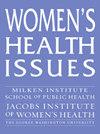Perceived Infertility and Contraceptive Use Among Reproductive-Aged Women in Ohio
IF 2.5
2区 医学
Q2 PUBLIC, ENVIRONMENTAL & OCCUPATIONAL HEALTH
引用次数: 0
Abstract
Objective
This study examines the association between sociodemographic factors and perceived infertility, as well as between perceived infertility, contraceptive use, and contraceptive method type.
Study Design
We analyzed the Ohio Survey of Women baseline data collected in 2018–2019 (N = 2,568). Using logistic regression, we assessed the association between sociodemographic characteristics and perceived infertility. We then used multivariate logistic regression and multinomial regression to estimate the association between perceived infertility and any contraceptive use and contraception method type (long-acting reversible, hormonal short-acting reversible, and coital-dependent methods).
Results
Age, race, marital status, household income, and prior pregnancies were associated significantly with odds of perceived infertility. Of those who said they were not at all likely to be infertile, 73% reported using any contraception compared to 63% of those who said they were somewhat to very likely to be infertile. In multivariable analyses, those who reported perceived infertility had 31% lower odds of using contraception than those who did not (adjusted odds ratio = 0.7; 95% confidence interval [0.5, 1.0]). Those with perceived infertility had twice the odds of using no contraception than using long-acting reversible methods compared with those without perceived infertility.
Conclusions
Reproductive-aged women in Ohio who perceive they may have difficulty becoming pregnant or be infertile have lower odds of using contraception, particularly long-acting reversible methods, compared with those who do not perceive they may be infertile. Improved education on infertility may be warranted to support individuals, particularly in groups with higher odds of perceived infertility, in making informed choices about contraception.
俄亥俄州育龄妇女的不孕症和避孕药具使用。
目的:本研究探讨了社会人口学因素与不孕症之间的关系,以及不孕症、避孕药使用和避孕方法类型之间的关系。研究设计:我们分析了2018-2019年收集的俄亥俄州妇女基线调查数据(N = 2568)。使用逻辑回归,我们评估了社会人口学特征与感知不孕症之间的关系。然后,我们使用多元逻辑回归和多项回归来估计感知不孕症与任何避孕使用和避孕方法类型(长效可逆、激素短效可逆和性交依赖方法)之间的关联。结果:年龄、种族、婚姻状况、家庭收入和怀孕史与不孕症发生率显著相关。在那些说自己完全不可能不孕的人中,73%的人说自己采取了避孕措施,相比之下,63%的人说自己有点或很可能会不孕。在多变量分析中,那些认为自己不孕的人使用避孕措施的几率比那些没有使用避孕措施的人低31%(校正优势比= 0.7;95%置信区间[0.5,1.0])。与那些没有察觉到不孕症的人相比,那些觉察到不孕症的人不采取避孕措施的几率是使用长效可逆方法的两倍。结论:在俄亥俄州,认为自己可能难以怀孕或不孕的育龄妇女使用避孕措施的几率较低,特别是长效可逆方法,与那些不认为自己可能不孕的妇女相比。加强对不孕不育的教育可能是有必要的,以支持个人,特别是在认为不孕不育的可能性较高的群体中,对避孕作出知情的选择。
本文章由计算机程序翻译,如有差异,请以英文原文为准。
求助全文
约1分钟内获得全文
求助全文
来源期刊

Womens Health Issues
Multiple-
CiteScore
4.50
自引率
6.20%
发文量
97
审稿时长
32 days
期刊介绍:
Women"s Health Issues (WHI) is a peer-reviewed, bimonthly, multidisciplinary journal that publishes research and review manuscripts related to women"s health care and policy. As the official journal of the Jacobs Institute of Women"s Health, it is dedicated to improving the health and health care of all women throughout the lifespan and in diverse communities. The journal seeks to inform health services researchers, health care and public health professionals, social scientists, policymakers, and others concerned with women"s health.
 求助内容:
求助内容: 应助结果提醒方式:
应助结果提醒方式:


